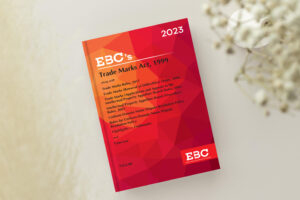Madras High Court: In an appeal filed under Section 91 of the Trade marks Act, 1999, praying to set aside the order dated 10-03-2015, passed by the Deputy Registrar of Trade Marks, wherein the Registrar rejected the Application for registration of the trade mark “INIMOX”, Senthilkumar Ramamoorthy, J. , while setting aside the impugned order, directed that the appellant’s mark “INIMOX” shall be registered subject to the condition that the mark shall be used only in respect of products intended for veterinary use and shall not be used in relation to pharmaceutical products intended for human use.
Background:
The appellant applied for registration of the word mark “INIMOX” in relation to medicinal and pharmaceutical preparations for veterinary use on a “proposed to be used” basis. The application was accepted for advertisement and was published in Trade Marks Journal notice of opposition objecting to the registration of the above-mentioned mark on the ground that it is the prior user and registered proprietor of the trade mark “IMOX” under Trade Mark in class 5 in respect of pharmaceutical and medicinal preparations with effect from 06-10-1986, and that the impugned mark “INIMOX” is deceptively similar to its mark. The impugned order was issued allowing the opposition and, consequently, refusing the application for registration of the mark “INIMOX”. Thus, the present appeal was filed.
Issues and Analysis:
Whether the additional documents sought to be relied on by the appellant can be admitted at the appellate stage?
The Court noted that Rule 7 (7) of the Intellectual Property Rights Division Rules, 2022 (‘2022 Rules’), this Court has the power to grant leave to produce additional documents in an appeal.
The Court said that the appellant had two prior opportunities to place on record all relevant evidence, i.e. either along with the application, or in response to the notice of opposition. Besides, since the trade mark application was made on a “proposed to be used” basis, evidence of use does not advance the case for registration with effect from 02-02-1999. Therefore, the Court permitted reliance on some documents which are in the public domain and would be of value in the adjudication of this appeal.
On the issue of whether the rejection of registration was justified, the Court noted that the respondent’s product is intended for human consumption, whereas the appellant’s product is intended to be administered only to animals. Further, the Court examined the relative grounds for refusal of registration.
It said that to decide whether goods are similar, the primary considerations are-
-
the nature of goods;
-
the origin;
-
whether the goods may be used as substitutes;
-
whether the goods are complementary; and
-
whether the trade channels are common.
Further, the Court added that being pharmaceutical products, notwithstanding the fact that the goods of the appellant are intended for veterinary use whereas the goods of the respondent are intended for human use, the goods are similar in nature and origin. Therefore, they are similar.
Whether refusal under Section 11(1) of the Trade Marks Act was justified?
The Court said that the strength of a trade mark that is coined by appropriating from a generic name or active pharmaceutical ingredient (‘API’) is weaker than an arbitrary or invented mark. The extent of appropriation from such generic name matters and, other things being equal, the greater the appropriation, the weaker the mark. Apart from the extent of appropriation, the extent of addition by the proprietor of the mark matters. The greater the addition to the generic name by the proprietor, the stronger the mark.
The Court remarked that likelihood of deception and confusion on the part of the public also cannot be underestimated, and this assumes relatively greater significance when an application to enter a mark on the register is under consideration because no infringement action would lie against a proprietor upon registration of the relevant mark.
The Court noted that the respondent admitted that it coined the trade mark “IMOX” by appropriating the letters ‘mox’ from amoxycillin. Thus, it said that the contention that publici juris was not proved, becomes immaterial. The respondent has thus appropriated three letters from the generic name. However, limited to the alphabet ‘I’ at the beginning. The appellant also appropriated the letters ‘mox’ from amoxycillin and added the letters “Ini” at the beginning.
The Court viewed that the appropriation from a generic name and the limited addition thereto render the respondent’s mark weak. While it may still be sufficient if the later mark turns out to be identical or if the later mark did not trace its origin to a common generic name, which is the active pharmaceutical ingredient in the relevant products, thus, the respondent is not entitled to prevent registration of the later mark.
Whether the registration of the later mark was liable to be refused in public interest by the Registrar because of the likelihood of deception and confusion, especially in the context of a pharmaceutical product considering principles laid down in Cadila Health Care Ltd. v. Cadila Pharmaceuticals Ltd., (2001) 5 SCC 73 and Macleods Pharmaceuticals Ltd. v. Union of India, 2023 SCC OnLine Bom 408?
The Court noted that the appellant’s product is an injection administered to animals whereas the respondent’s product is a capsule for human consumption. Further, it said that there is clearly no evidence of the use of the trade mark “INIMOX” in relation to production of human vaccines. The fact that the respondent has not initiated any action for infringement or passing off against the appellant, although the appellant asserts use since 1999 does not operate as an estoppel against an opposition by the respondent, but it is indicative prima facie of the absence of actual deception or confusion. The absence of evidence of actual confusion or deception, in these types of cases, is not a condition precedent for a successful opposition, but cannot be construed as irrelevant.
Thus, by considering that the administration of the drug is only in the injection form and, therefore, only by doctors or nurses trained in veterinary medicine; the use of the impugned mark only in relation to veterinary drugs ; the statutory prescription regarding packaging; the existence of many registered marks with the element ‘MOX’; and the fact that most pharmacies in India do not combine human and animal drugs, the Court held that there is no likelihood of deception or confusion, provided a condition is imposed that the mark should not be applied to products for human consumption.
[Indian Immunologicals Ltd. v IPCA Laboratories, 2023 SCC OnLine Mad 7753, decided on 08-12-2023]
Advocates who appeared in this case :
For Appellant: Advocate Vindhya S.Mani, Advocate Kiran Manokaran, Advocate Krithika Jaganathan, Advocate Vishal Sundar, for Lakshmikumaran and Sridharan Attorneys
For Respondent: Advocate.Yatin Khochare, Advocate Preeta Panthaki,Deputy Solicitor General. Rajesh Vivekananthan,







